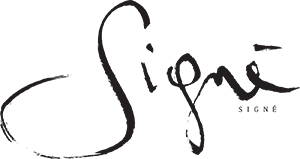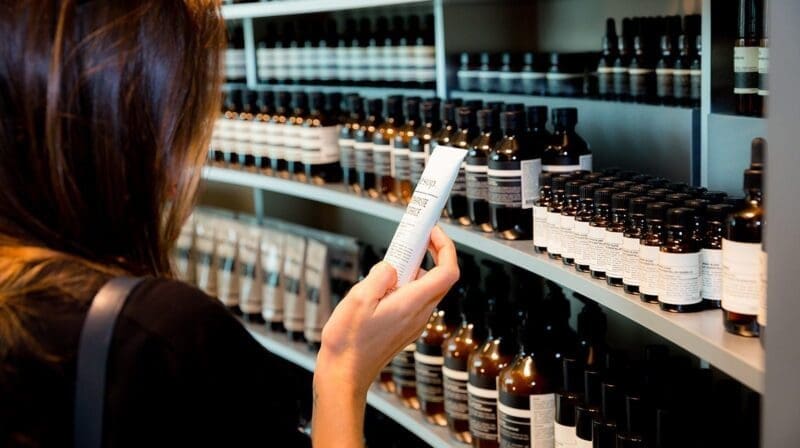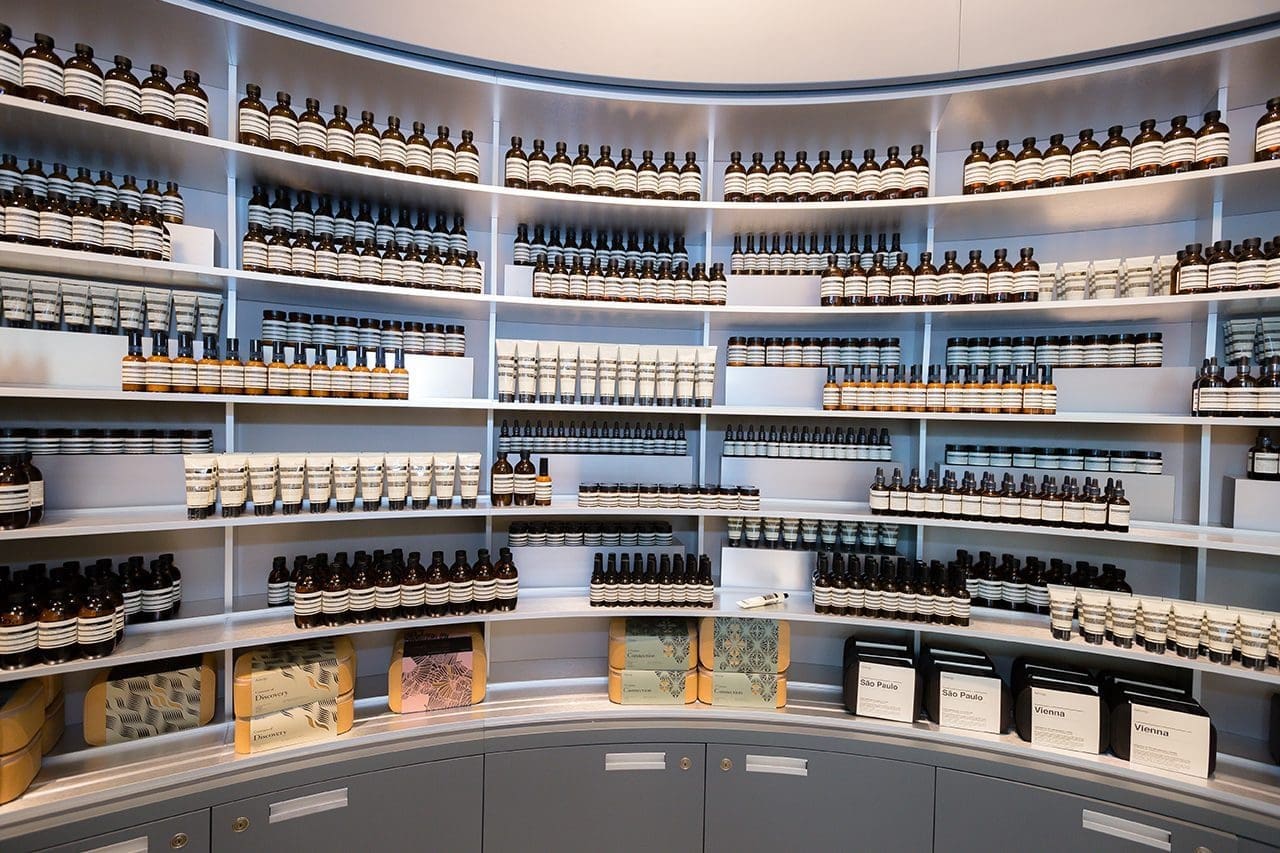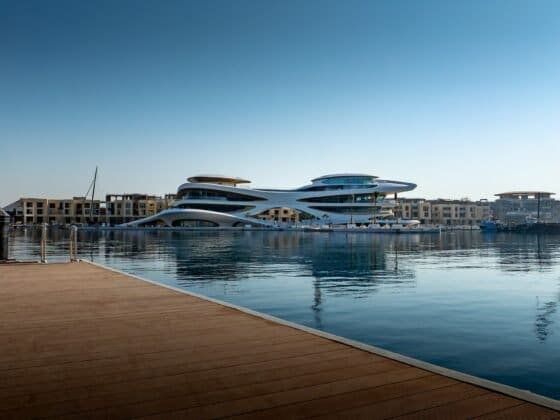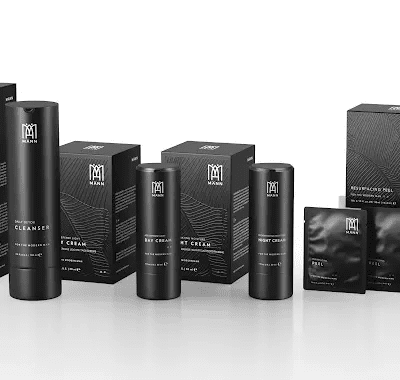Every brand wishes to be different and often goes to great lengths to achieve it but often falls short. Some, however, carve out a niche for themselves by having a clear idea of what they want to be, and then uncompromisingly sticking to it. One such brand is the Melbourne, Australia based luxury skin and hair care company, Aesop.
“To a certain degree, the personality of the founder has been essential for the brand over the 30 years of its existence. The consistency with which it has been faithful to the original idea is the strongest aspect of the brand and today also our biggest challenge is to protect it,” Thomas Buisson, Aesop’s EMEA General Manager, told Signé during his recent visit to Dubai.
“We don’t do celebrity endorsements. In the few cases when we do use a face [for marketing,] it’s not the usual retouched perfect faces that you often see elsewhere, but they are real people’s faces. We don’t launch new products as much as others because we don’t pretend to have invented a new molecule every six months. We don’t do anti-ageing products because we don’t want to overpromise or make people think things that are not true,” Thomas added.

His words are not just rhetoric. One only has to visit their store in The Dubai Mall or their website aesop.com to see this approach in practice. The website, rather than prick one’s vanity, seeks to engage one’s intellect. In addition to listing all the products offered by the brand under the sub-headings Skin, Hair, Body, Fragrance, Home, Kits & Travel, and Gifts, there is also a section called Read.
Here one can read about the brand’s history and philosophy, and about the Aesop Foundation which fosters literacy, storytelling, and diversity. Here one also finds ‘The Ledger,’ a collection of short anecdotes, and ‘The Fabulist,’ a collection of essays; both touch upon a broad range of topics written by individuals from around the world. Then there is the ‘Taxonomy of Design’ dedicated to exploring the story behind the brand’s various bespoke stores around the world. And of course, there are the quotes: “Do not wish to be anything but what you are, and try to be that perfectly,” states one by Saint Francis de Sales.
The story of the brand dates back to the 1980s when Aesop began as a hairdressing salon started by Dennis Paphitis. His father was a barber and Dennis trained as a hairdresser after he dropped out of school. He is a self-made and self-taught man, well-travelled and incredibly well read. He had already, at that time, wanted to bring everything that had amazed him in his travels into a concept.
Dennis got into making his own products mostly because he hated the smell of the products available in the market, in particular, hair colours. He first started to mix his blend of vegetable-based essential oils to them for hiding the smell of the chemicals that were used. Then he developed a few other products of his own, mostly hair products but also some hand products that he used in the salon. If you saw images of the salon, you will notice that it already had all the codes of Aesop. It had the same sleek minimalistic design. The labels are very similar to those on the products of today. Everything was already there.
Together with Suzanne Santos, Aesop’s first employee and current Product Advocate, they had an approach to serving customers which was about developing a deep understanding of the customer’s requirement and then fulfilling them to the best possible level. The salon became very popular, and it was hard to get an appointment. So, it had to work on a sort of subscription basis where you would get a slot every six weeks or so.
As the popularity and reputation of the salon grew, so did the demand for Dennis’ hair care and skin care products. He “did not make a conscious move into selling products. It just happened organically,” says Thomas. However, given Dennis’ perfectionist nature, “he was not happy with the fact that his products were sold through third parties” where he did not have complete control of the merchandising. This led to the realisation that “there was potential in retailing his products on his own. This was when he thought he needed to find someone to help him run this business. So, he hired Michael O’Keefe who is still our CEO today.”
Michael “comes from a completely different background, investment banking and trading, and with traditional education. He has an MBA from the London School of Economics. And so, the personality of Aesop today, for me, is the alchemy of these two persons. It’s not like one is commercial and the other creative. Dennis has this unique blend of taste and creativity, but at the same time, he’s got a really good commercial sense. Michael has a long-term view of things. He’s like someone who is always two or three steps ahead of you while playing chess.”
An accomplished triathlete, Michael studied applied sciences and engineering prior to his MBA. At the height of the dot-com era when a lot of new businesses were popping up for Michael to choose from, none of them really convinced Michael to jump ship until he was introduced to Dennis. Michael instinctively knew that he had found a product with great potential. Working with formulations appealed to his engineer side, the opportunity to build a brand from the ground up appealed to his MBA side, but more importantly, in Dennis, he had found someone who shared his values on how to build a product and run a business.
“When he created the brand, Dennis did not want to be another one of those cosmetic giants that sell the notion that you are going to look like someone famous if you use their products. Our products are based on the notion of pure pleasure that one gets from a beautiful aroma. So, I will not say that your life is going to be different after using it but that it is going to be more pleasurable. Dennis also felt that it was important to ensure that there would be a certain level of lightness and humour in the way we sell our products.”
To illustrate the latter point, Thomas gave us the example of one of their recently released products; the Post Poo Drops. “The essential oils that we use, we can’t use the bottom part of it, so we used to keep them in the company toilets for fragrance. When anyone went to the toilets for the big projects, they could put a few drops and the concentrated aroma, particularly rose or lavender, was strong enough to kill the foul odour. So one day, Dennis said: ‘why don’t we try and make a product out of it.’ Later, he told me after a meeting: ‘I think we should call it Post Poo drops.’ In French, it’s much worse. It’s called ‘Gouttes Anti-Odeurs de Merde.’ So I said: ‘Dennis this is too strong. We can’t have that word on a label.’ But he said: ‘Give it some time to digest.’ It took some six months to formulate it and by that time I got used to it but when we launched it, it was all over the press. It got a lot of attention because it was funny and actual at the same time. When the conservative French newspaper Le Figaro wanted to write about it, they used dots because they did not want to use that word.”
Product development, in general, at Aesop is a rather straight forward process but again there are strict guidelines: “We have meetings every three months where we discuss product proposals, and sometimes we get some suggestions from our retail stores. We never launch products for the sake of PR. We launch a product when we believe that there is an inherent need for a product within our range.” For example, “We have products for dry skin, and we have products for oily skin, but we did not have a product that was suitable for combination skin. They are complicated because they are both dry and oily at the same time. So recently we launched a new range which is called ‘In Two Minds’ specifically for this skin type. So, I would say that in the majority of the cases, it is a necessity within our range that determines the launch of new products.”

Most of these products are contained in the brand’s signature “amber glass bottles [which] come from the pharmaceutical industry. They were chosen because they protect the contents from the sun and light, and because we didn’t want to invest in packaging, we didn’t want to invest in boxes. Today this style is somewhat overused, but back then it was unique.” Also, the utilitarian monochrome labels found on the bottles and other types of containers “may look like a simple arrangement of letters and lines but it is not a generic label. It is the fruit of artistic calculation by a dedicated team of graphic artists where every label is designed to create a pattern when all the products are displayed together. The lines they create also become part the signature lines of our stores.”
One may say that after the products and their packaging, the brands other distinctive signature comes from the nearly 190 retail stores spread across 50 countries. “All our stores are different. The only common elements are our products and the way they are merchandised. The merchandising is built around the idea of series and moments of chaos. So you have the perfectly arranged products in series and the lines of the decor and on the labelling are the distinction lines that assigns the space. Below these lines, there is a kind of an explosion of words. So wherever you may be, you will recognise these lines.”
The first Aesop store opened in 2004, in the Melbourne bayside suburb of St Kilda. The guidelines adopted then became the guidelines for all future stores. When considering new locations, Aesop makes the effort to weave themselves into the fabric of the street and add something of merit rather than impose a discordant presence, and to use a locally relevant design vocabulary and to work with what is already in place.
The recently opened flagship store in Edgehill, Nashville, USA, beautifully demonstrates Aesop’s retail space concept. The 74-square metre store is situated in a “relaxed” neighbourhood and is housed in one of eight 1920s brick buildings in a complex that happens to be a neighbourhood institution. It was Aesop’s first American collaboration with Parisian architects Ciguë, with whom Aesop “has an enduring creative partnership.”
The design “draws inspiration from Woodstock Vintage Lumber, a local supplier that salvages the skeletons of early textile mills, warehouses and homes in the area. Ciguë focused on first-growth Heart Pine logs reclaimed from pioneers’ homes, which provide dramatic spatial anchors—both sculptural and structural—to the otherwise pared-back interior. Cut to various heights, the textured logs are dispersed around the cavernous volume, which is stark with its surfaces of white stucco, lime-washed brick and polished concrete [floors]. Oriented vertically, they act as the structural support system for shelving, storage and joinery elements throughout the light-filled space, their strong visual presence also affecting a dynamic aesthetic.”
Aesop’s first stand-alone store for the region, in the Dubai Mall, features screed flooring, lacquered timber wall panels, vegetal leather shelve covers, as well as aluminium shelving, counters and detailing in a typical restrained materiality approach. In keeping with their region-centric approach, the brand has put together the ‘Dubai’ travel case featuring a selection of Aesop’s favourites, suitable for all skin types and ideal for urban-dwellers and travellers. The brand is slowly but surely gaining traction in the region without resorting to much fanfare and glitzy marketing, without compromising on their core values.
A quote, by Federico Fellini, on the wall of Aesop’s headquarters in Melbourne’s trendy Fitzroy district reads: “The visionary is the only true realist.” Dennis Paphitis and Michael O’Keefe are, in a way, the embodiment of Fellini’s words, particularly considering what they have achieved in the past 30 years.
